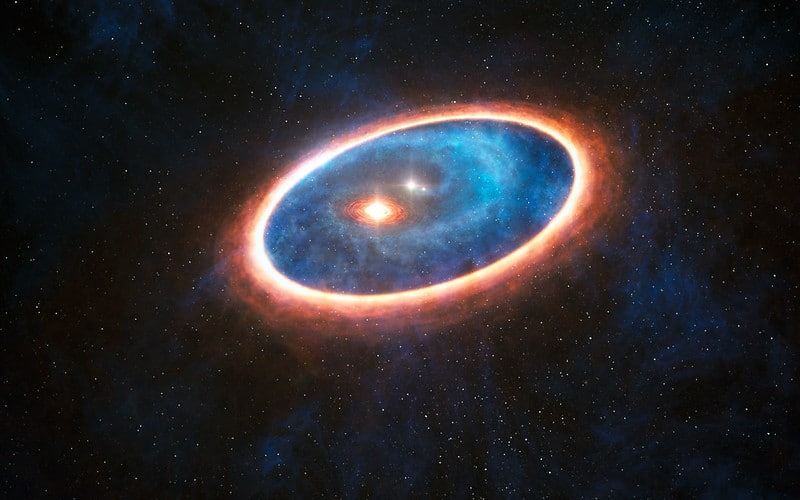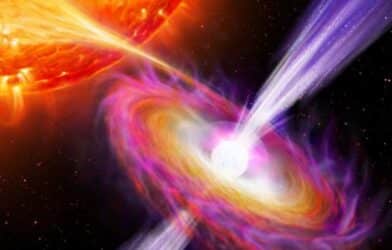Astronomers have yet to discover extraterrestrial life, but binary star systems could hold clues about where to look, according to scientists from Denmark and the University of Michigan.
The researchers’ insights are based upon observations of a binary star system, called NGC 1333-IRAS2A, approximately 1,000 light-years away. The team set out to study the star system to better understand how stars and planets form.
This 10,000-year-old star system, which is extremely young astronomically speaking, has yet to give birth to planets. Rather, a disc of dust and gas surrounds it, which theoretical models project will accrue into planets, moons, and other celestial bodies over millions of years.
“We were trying to peer as close as we could to the most luminous star in the binary—the primary star—and observe the beginnings of planetary system formation, and we got it, but in a different way,” said Edwin Bergin, co-author of the study, in a statement. “The result that we have has something to do with how planetary systems form, and it’s that the binary star system can influence planetary formation tremendously.”
Scientists collected data retrieved by a network of 66 radio telescopes, called the Atacama Large Millimeter/submillimeter Array (ALMA). The data served as a snapshot of the star system, which helped the team simulate its past and future with computers.
Computer simulations revealed that the disc of gas and dust swirling around the star system followed an irregular pattern. The material would speed up and slow down every 10, 100, and 1,000 years or so. The stars would also shine 10 to 100 times brighter than normal during these times.
Researchers hypothesize that the glow could be explained by material from the disc plummeting into and warming the stars as they dance around each other.
“The heat will make the star much brighter than usual,” explains Rajika Kuruwita, a postdoctoral researcher who was involved in the study. “These bursts will tear the gas and dust disc apart. While the disc will build up again, the bursts may still influence the structure of the later planetary system.”
Findings indicate that planets form differently in star systems with more than one star. About half of the stars in the galaxy are in a binary system, with some systems containing three or more stars.
Astronomers looking for extraterrestrial life have largely limited their search to star systems with only one star like our own. Many single star systems were once a part of a binary system before drifting away and flying solo. Given the significant role binary star systems play in planet formation, the researchers suspect studying them more may prove fruitful in the quest for extraterrestrial life.
“The result is exciting since the search for extraterrestrial life will be equipped with several new, extremely powerful instruments within the coming years,” says Jes Kristian Jørgensen, principal investigator of the study. “Such results may pinpoint places which would be especially interesting to probe for the existence of life.”
Moving forward, the scientists plan to use ALMA again to observe other binary star systems as well as comets potentially harboring raw ingredients for life.
The study is published in the journal Nature.












-392x250.png)